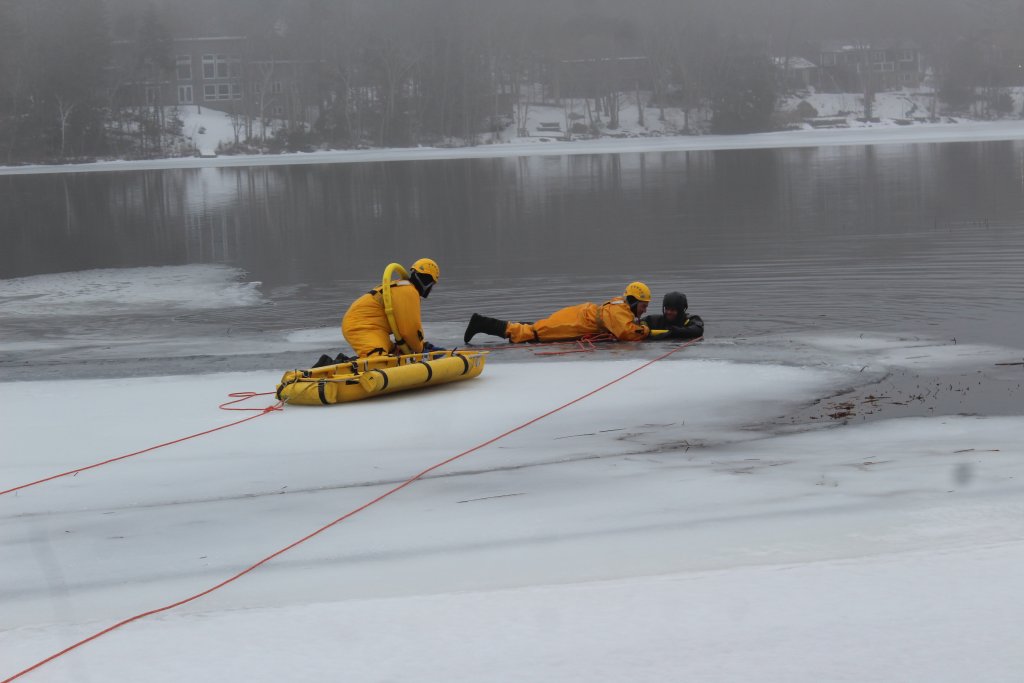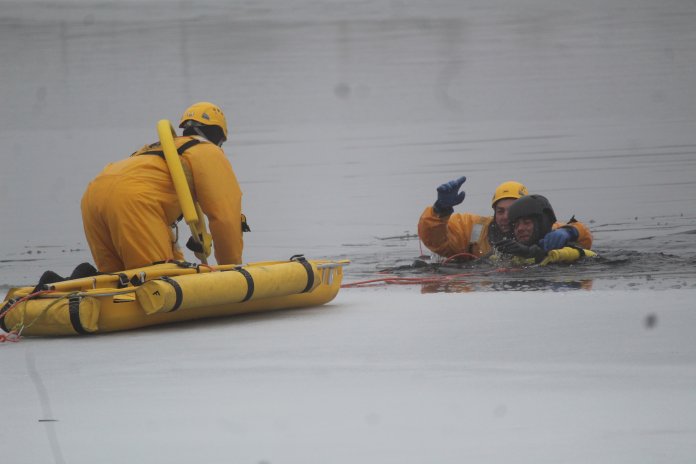FALL RIVER: Firefighters from Station 45 in Fall River along with Halifax District RCMP and Canadian Red Cross officials showed the importance of a quick response in the event of a fall through many of the lakes and ponds in the surrounding areas.
On Lake Thomas behind Inn on the Lake, RCMP Const. Michael Elms donned the gear he needed to play victim of a fall through ice while career firefighters stood at the ready to practice the technique of an ice rescue.
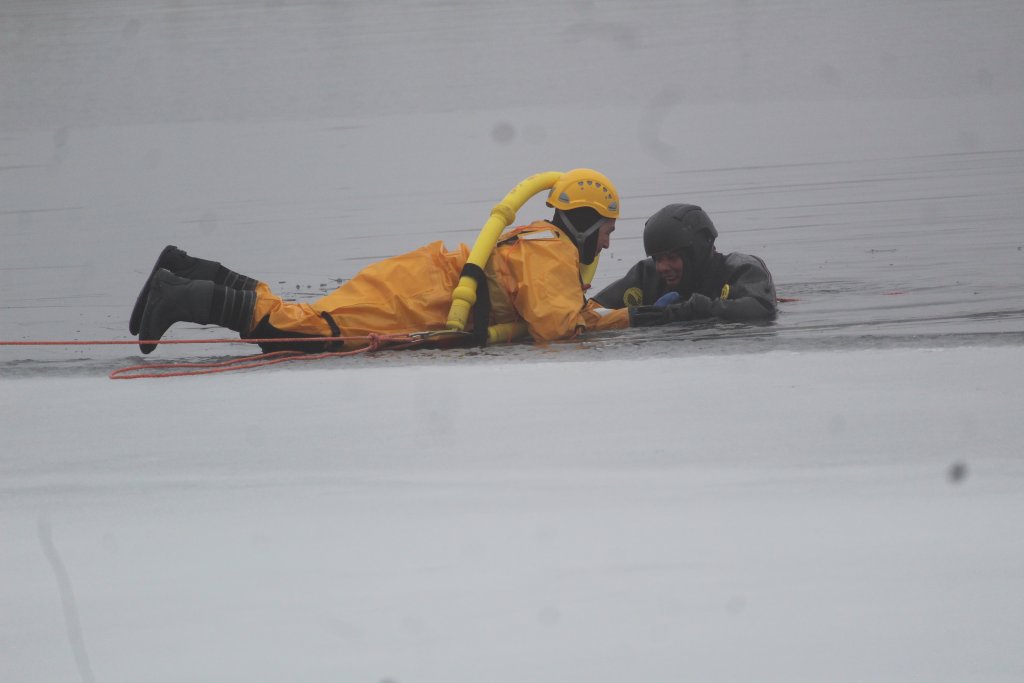
Scott Shaffner with Halifax Regional Fire said its prudent people should be using caution all the time when checking the ice.
“You never know what the ice is going to be like, especially here in N.S.,” said Shaffner. “We get a lot of cold weather, a lot of warm weather so it’s never consistent.”
He said HRM has a system in place where they do check the ice at various locations across the municipality.
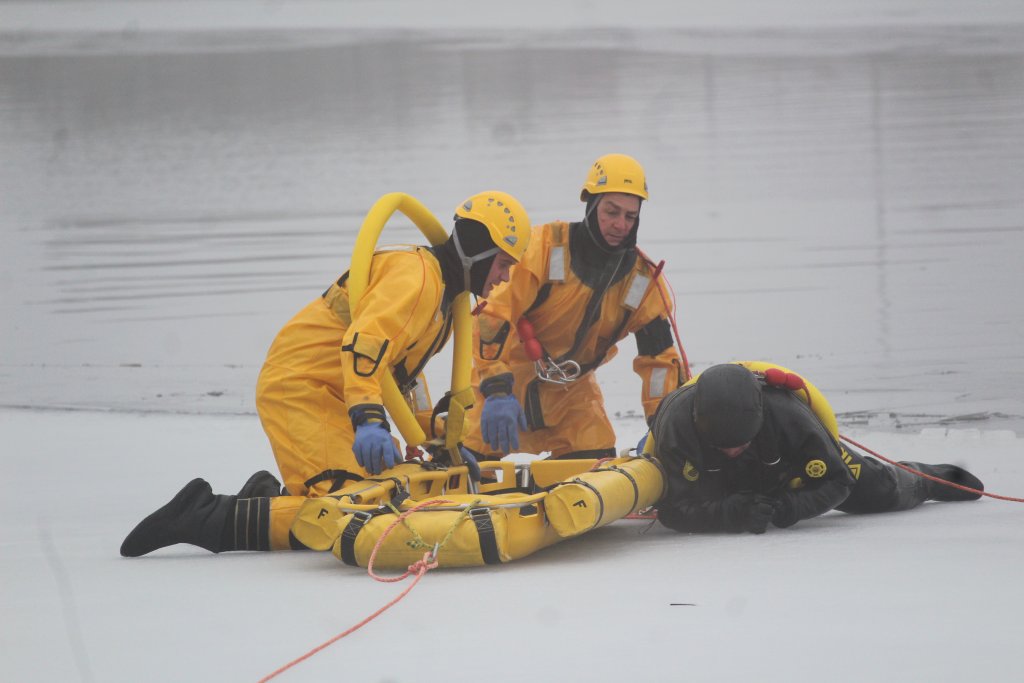
A perfect example of varying ice thickness was the initial location the demonstration was going to happen in Waverley–the ice was too thick for them to do the demonstration.
“It was 18 inches thick there and here in Fall River the lake is open with water visible,” he said.
Shaffner said caution is number one priority all the time for people out and about on the lakes and rivers in the winter.
“We don’t like to respond to ice rescues,” he said. “We encourage people to use a lot of caution on the ice.”
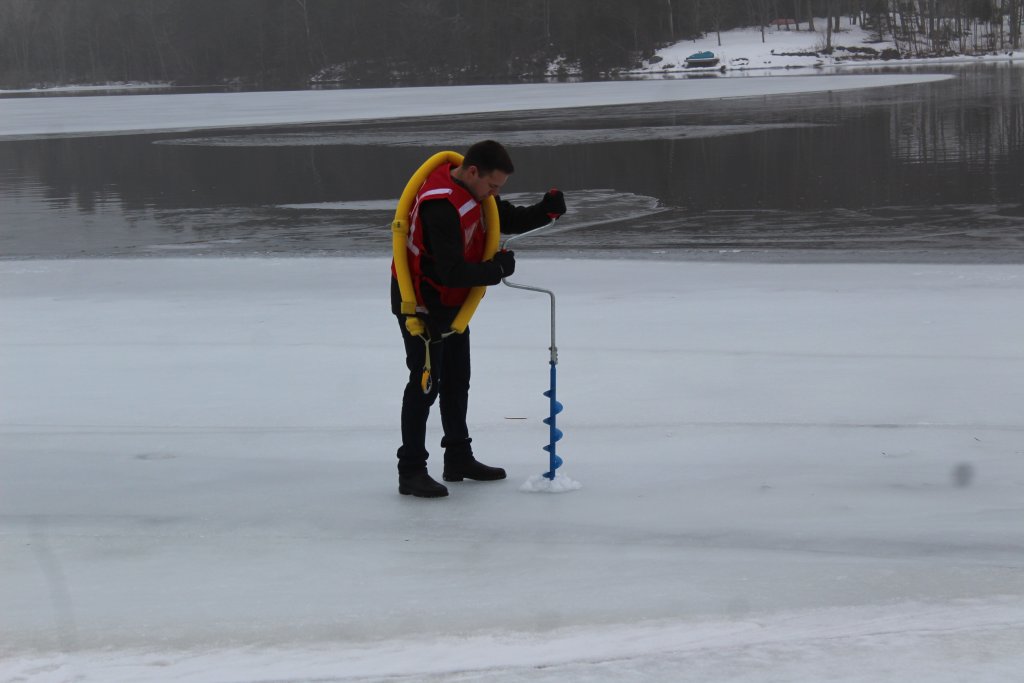
An official from the Canadian Red Cross did a demonstration where they checked the thickness of the ice for those in attendance.
Being able to self extricate from a fall through the ice makes a difference, however shock and fatigue, or a medical condition, can pose a serious risk. Fast reactions by trained responders plays a vital role in fast rescue.
Ice thickness should be:
- 15 cm for walking or skating alone
- 20 cm for skating parties or games
- 25 cm for snowmobiles
Many factors affect ice thickness including:
- Water depth and size of body of water
- Currents, tides and other moving water
- Chemicals including salt
- Fluctuations in water levels
- Logs, rocks and docks absorbing heat from the sun
- Changing air temperature
- Shock waves from vehicles traveling on the ice
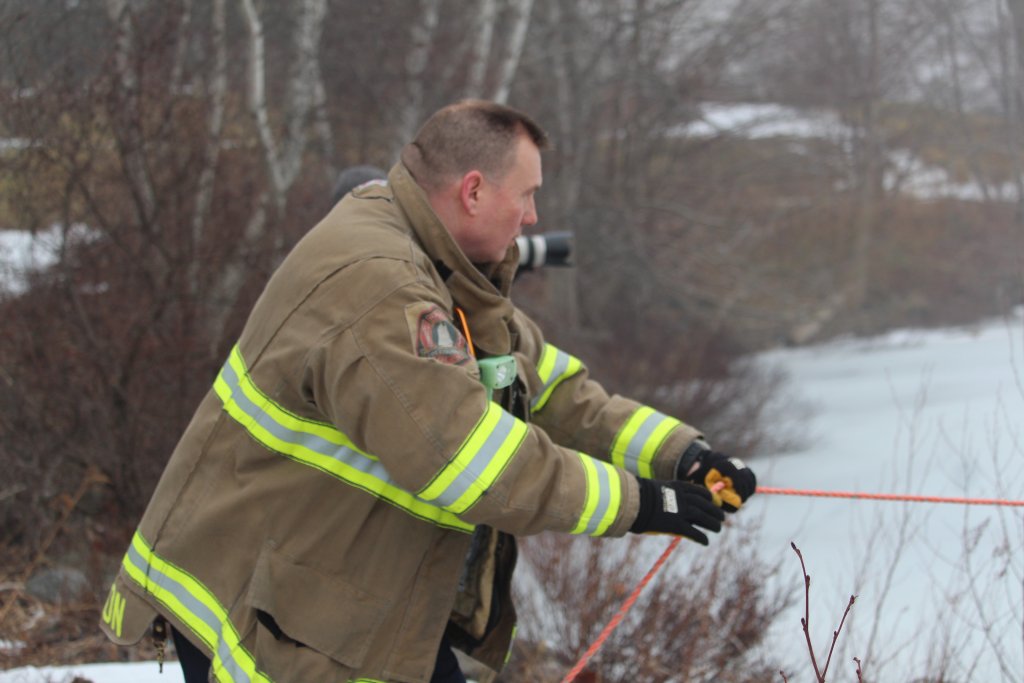
Make sure you know how to escape if you break through ice, and how to help someone escape a similar situation. If you break though:
- Do not panic. Your clothing will trap air and keep you buoyant.
- Turn towards the direction you came from and place your hands and arms flat on the unbroken surface.
- Kick your feet and try to push yourself up on top of the unbroken ice on your stomach, like a seal.
- Once you are lying on the ice, don’t stand up. Roll away from the break until you are on solid ice.

If someone else breaks through:
- Stay calm and think out a solution.
- Don’t run up to the hole. You might break through and then you’ll both need help.
- Use an item to throw or extend to your friend to pull them out of the water—if you don’t have a rope, improvise with items such as jumper cables, skis, etc.
- If you can’t rescue the person immediately, call 911 on a cell phone.
